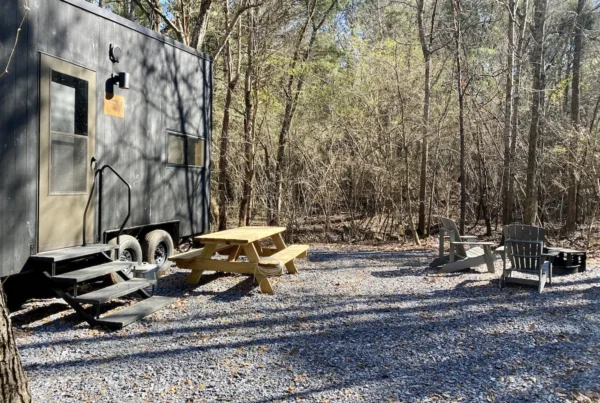The Great Smoky Mountains lie along the North Carolina-Tennessee border, forming part of the Appalachian mountain range. It runs up through the Eastern United States all the way to Maine. The national park is stunningly beautiful.

It is home to diverse wildlife and offers visitors great activities that get them closer to nature. Check out these fun facts you need to know before you go to the Great Smoky Mountain National Park (GSMNP).
About Great Smoky Mountains National Park
First, let’s talk about the location of the park. The park lies on the NC-TN border, and it encompasses over 520,000 acres of beautiful forested mountains, green meadows, and miles of streams. Through the park runs the Appalachian Trail, which goes the length of the Appalachian Mountains.
The park is located just off of U.S. Highway 441, which passes through the nearby towns of Cherokee, NC, and Gatlinburg, TN. Visitors may enter the park from both of these locations. One of the most visited national parks in the country and a top national park in the eastern states, GSMNP is an excellent family vacation destination because of its natural features. It is the only national park in the U.S. that does not charge an entrance fee.
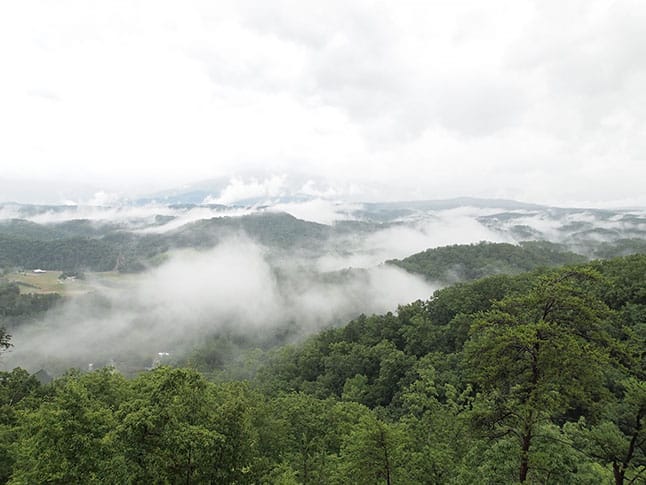
Great Smoky Mountain National Park used to be privately owned land. The states of Tennessee and North Carolina paid to construct Newfound Gap Road, but before they handed it over to the federal government, it was stated that “no toll or license fee should ever be imposed” to travel the road. President Franklin D. Roosevelt officially dedicated the park as part of the National Park System in 1940.
A popular destination for visitors, the Great Smoky Mountains National Park receives almost 11 million visitors annually. Yes, even more visitors than the Grand Canyon if you can imagine that! It is also a UNESCO World Heritage Site because of its rich natural history as well as historical importance to the people of the United States.
Plants and Animals in the Park
GSMNP is mainly composed of deciduous temperate forest, much of which is made up of various plant species. The most prominent types of plants are trees. These species of trees include maple, oak, magnolia, walnut, and tulip poplar. Also found in the park are several types of conifers, such as the Fraser fir and numerous pines and cedars.
Ferns, wildflowers, grasses, and mosses, are just some of the many diverse species of plants that thrive in the national park. On your next trip, see if you can differentiate between the native tree species as you enjoy the beauty of its ancient mountains.

Animal life in the Smoky Mountains is diverse as well. Notable species of mammals in the park include black bears, white-tailed deer, bobcats, raccoons, skunks, and wild boar. Several species of squirrels, including flying squirrels, rabbits (cottontails), and many species of bats also call the park home.
Birds found in the Great Smokies include Red-tailed Hawks (and other smaller hawks), Bald Eagles, several types of owls, Wild Turkey, Ruffed Grouse, Bobwhite Quails, and dozens of other species of birds. Because of the incredible diversity of wildlife and plant life, GSMNP is designated an International Biosphere Reserve.
What to Do in the Park
Hiking and camping are some of the more popular activities in which visitors to the park may participate. The temperature never reaches above 80 degrees, thanks to the covering provided by the dense tree canopy, which makes traversing the miles of hiking trails rather pleasant year round. Other activities include birdwatching, fly fishing, and water sports.
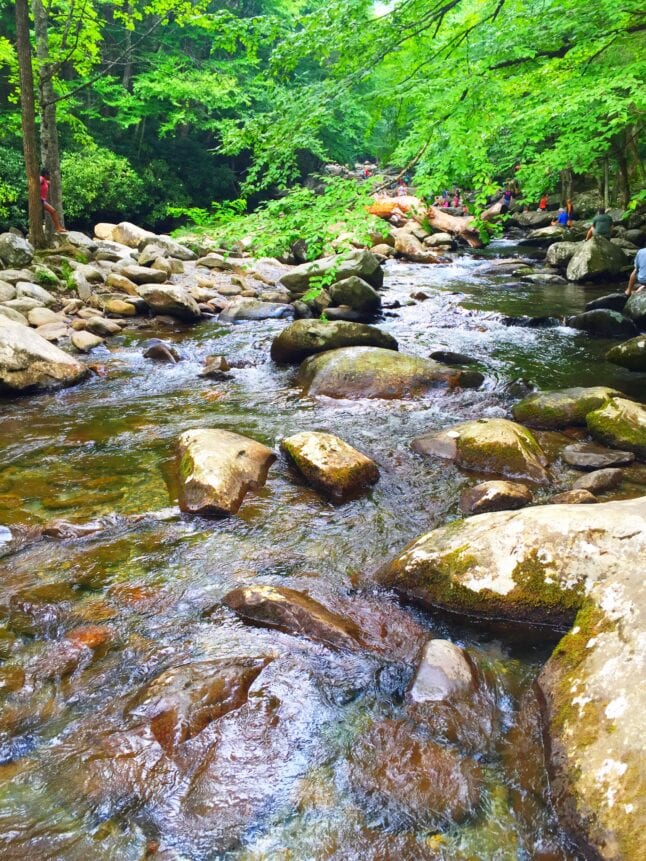
Rafting, canoeing, kayaking, and tubing are very popular in the park’s many rivers. For the first time ever, in March of 2017, every stream in the park was open for fishing. Native fish species are found throughout the park in streams and waterfalls. Horseback riding is also popular, and 550 miles of unpaved roads meant for hiking are also open to horses.
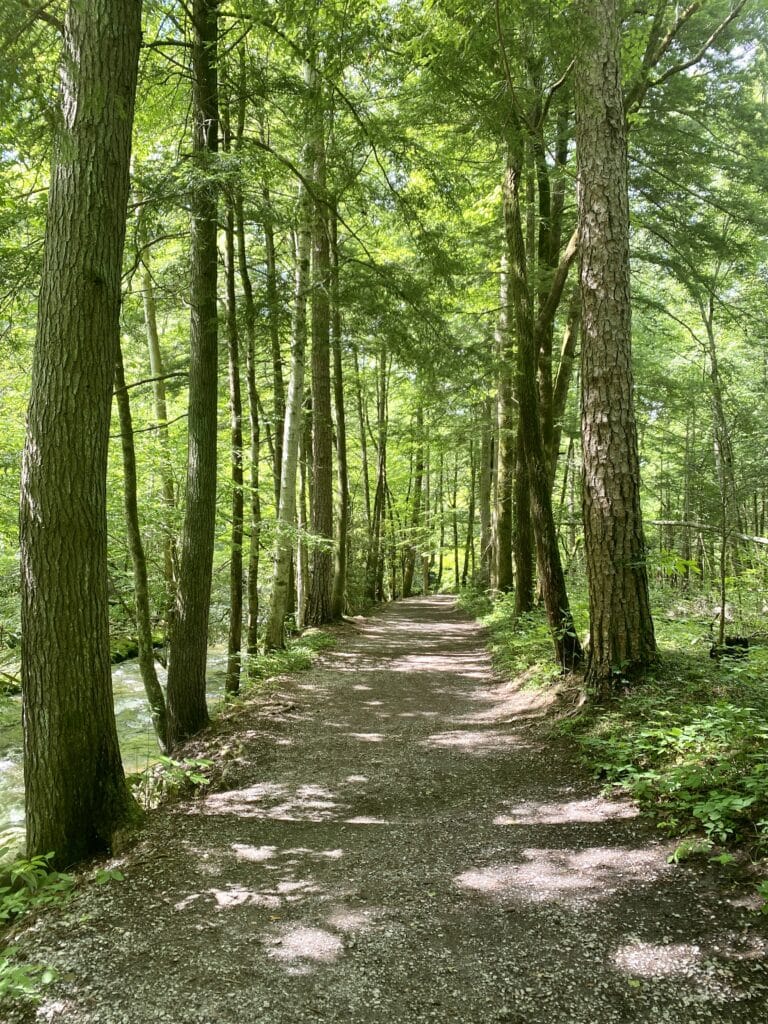
For an over-the-top hiking and camping experience, consider visiting LeConte Lodge at the summit of Mount LeConte. The only way to reach LeConte Lodge is by hiking to the top of Mount LeConte. Llamas are used to carry supplies to and from the summit, and the experience of staying at the lodge is definitely on the more primitive side.
Great Smoky Mountains National Park Visitor Center
Another great activity for families is planning a visit to the park’s Visitor Center. Four visitor centers are located within the national park at Cades Cove, Oconaluftee, Sugarlands and Clingmans Dome. In addition, three information centers are located outside the park in the communities of Gatlinburg, Sevierville, and Townsend.
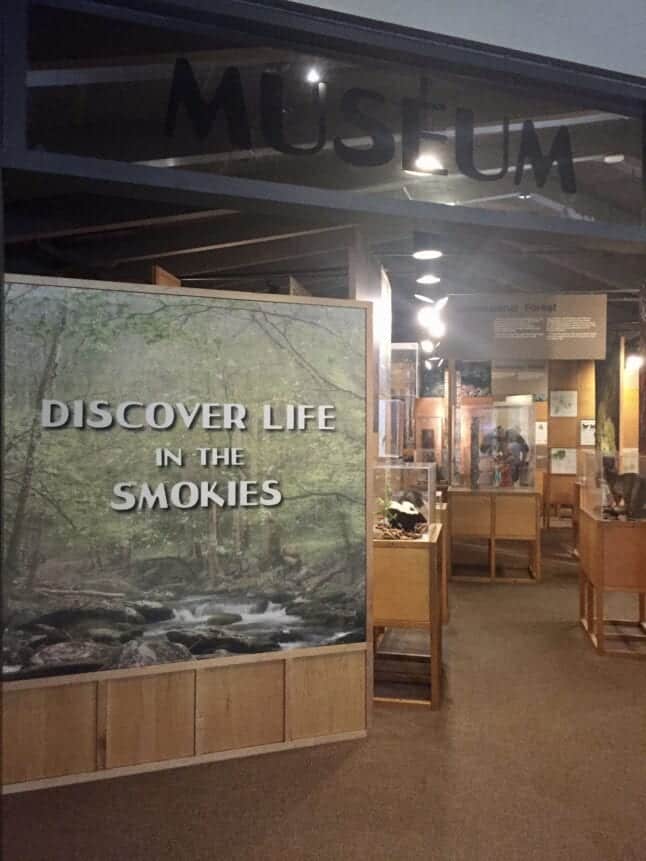
Our family enjoyed visiting the Sugarlands location because of the natural history exhibits and the free, 20 minute film about the history of the park. One of the best ways to experience the park with kids is to hike a short trail. An easy one for beginners is the paved trail right outside the Sugarlands Visitor’s Center.
We also enjoyed visiting Clingmans Dome, which can be accessed by driving up Clingmans Dome Road or hiking from the Appalachian Trail. The highest peaks in the park are found at Clingmans Dome. This area gives visitors a breathtaking, almost 360 degree view of the national park on any given day. The observation tower at Clingmans Dome is open year-round. The paved road leading up to it is closed from December 1-April 1 and as needed in cases of unsafe weather.
Interesting Facts about Great Smoky Mountains National Park
The Great Smoky Mountains are some of the oldest mountains in North America. One of the oldest mountain ranges in the country is also home to several different species of salamanders. There are so many salamander in the park, in fact, some have taken to calling it the Salamander Capital of the World. As many times as I’ve visited this Eastern Tennessee gem, I had no idea that salamanders were such a huge part of the park’s most interesting things to see.
Obviously, hiking and camping are big draws for the parks visitors, but so are the historic structures. The National Park Service has done an excellent job of preserving and restoring historic buildings. Visitors can see original schools, churches, grist mills, and log cabins. The best places to see these historic structures are the Roaring Fork Motor Nature Trail, Sugarlands Visitor Center, and Cades Cove.
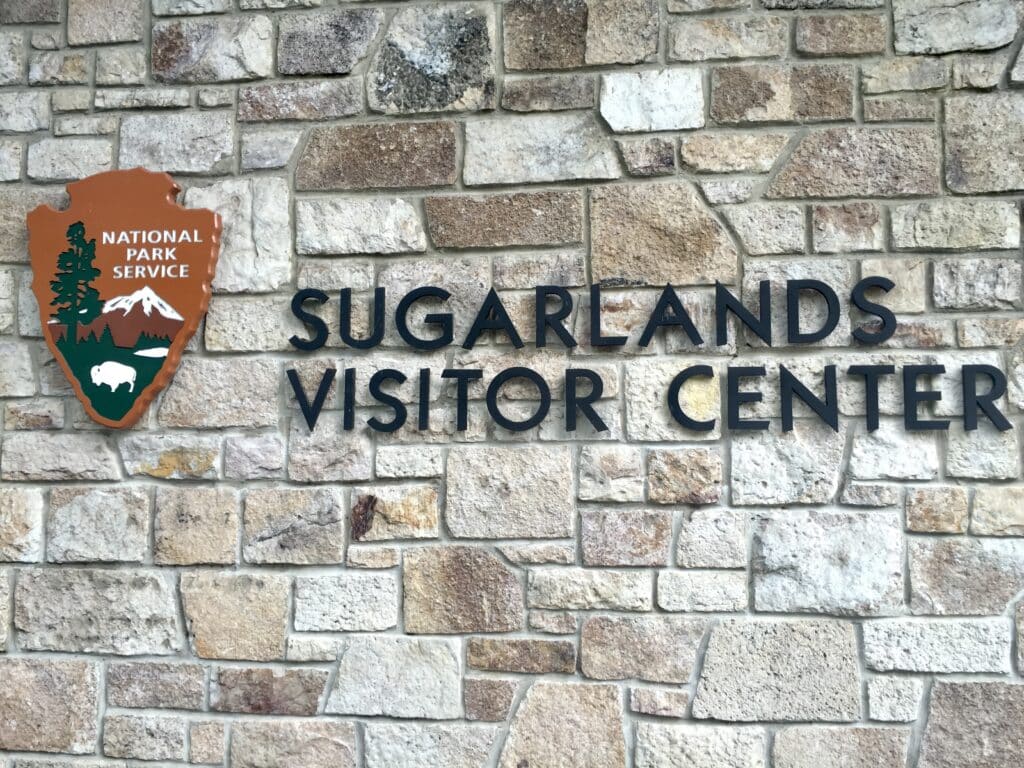
Disney’s popular movie based on Davy Crockett was partially filmed in the national park. During the Great Depression, several federal organizations, like the Civilian Conservation Corps, made infrastructure improvements to the park including fire watchtowers and hiking trails.
Finally, we can thank the Cherokee Indians for naming the Great Smoky Mountains. They previously inhabited the land before the first settler arrived. In their language, they called the mountains “Shaconage” (Sha-Kon-O-Hey), which means “land of the blue smoke.” The “smoke” is actually a mist or vapor that rises off the vegetation. That mist is then scatters blue light from the sky when it changes into its gaseous form. Thus the nickname place of blue smoke.


